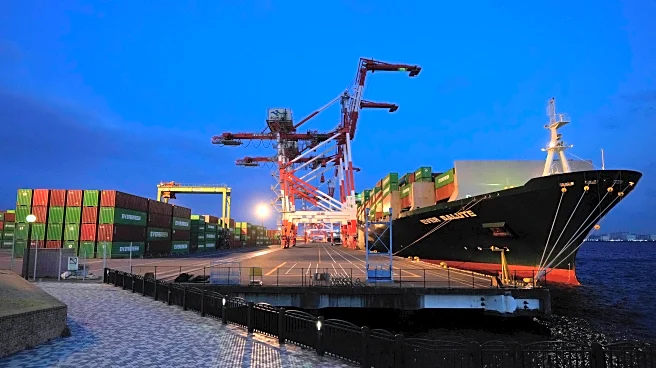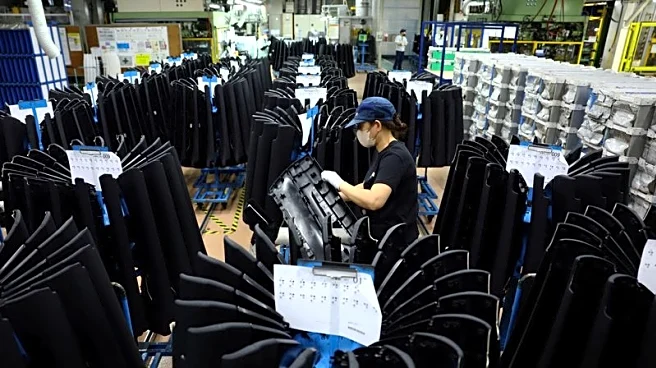What's Happening?
Japan's economy experienced a contraction at an annual pace of 1.8% during the July-September quarter, primarily due to the impact of tariffs imposed by President Trump. The Japanese government released
data indicating a 0.4% decline in gross domestic product on a quarter-by-quarter basis, marking the first contraction in six quarters. Exports fell by 4.5% annually, as businesses attempted to ramp up exports to mitigate higher costs from tariffs. Additionally, private residential investment saw a significant drop, influenced by revisions to Japan's building code. The U.S. tariffs, particularly a 15% surcharge on Japanese imports, have posed challenges to Japan's export-reliant economy, affecting major automakers like Toyota Motor Corp.
Why It's Important?
The contraction in Japan's economy highlights the broader implications of U.S. trade policies under President Trump, particularly the tariffs that have strained international trade relations. Japan's reliance on exports makes it vulnerable to such trade barriers, impacting its economic growth and stability. The situation underscores the interconnectedness of global economies and the potential ripple effects of policy changes in one country affecting others. For U.S. industries, the tariffs may lead to increased costs for imported goods, affecting consumer prices and business operations. The economic strain on Japan could also influence its trade negotiations and diplomatic relations with the U.S.
What's Next?
Prime Minister Sanae Takaichi has pledged to revive Japan's economy, potentially through increased government spending. This approach may complicate the central bank's efforts to control inflation by raising interest rates. Analysts suggest that a rate hike in December is unlikely due to the current economic conditions. However, there is optimism that the economy may improve in the coming months, with the Bank of Japan possibly resuming interest rate increases early in 2026. The situation will require careful monitoring of economic indicators and business sentiment to assess the effectiveness of government policies and the potential for economic recovery.













